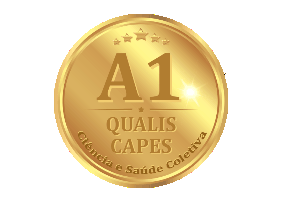0368/2023 - Advances and challenges of reducing adult educational inequalities in stomach cancer: a time series study, Colombia, 1998–2015
Avanços e desafios na redução das desigualdades educacionais no câncer de estômago em adultos: um estudo de série temporal, Colômbia, 1998–2015
Autor:
• Laura Vasquez-Escobar - Vasquez- Escobar, L - <laura.vasquez@uptc.edu.co>ORCID: https://orcid.org/0000-0002-6909-7387
Coautor(es):
• Martha Saiz - Saiz, M. - <martha.saiz@uptc.edu.co>ORCID: https://orcid.org/0000-0002-6906-3953
• Ivan Arroyave - Arroyave, I - <ivan.arroyave@udea.edu.co>
ORCID: https://orcid.org/0000-0001-9989-5833
Resumo:
Objective: Trends in educational inequalities in adult (25 years old and over) gastric cancer mortality by sex and age group in Colombia1998–2015 were analyzed.Methods: An ecological time series study was conducted using Colombian vital statistics and official population estimations. Age-standardized mortality rates (ASMR per 100,000 person-years) for gastric cancer were calculated separately by educational level, sex, and grouped age. A Poisson regression model was used to calculate Rates Ratios (RR) and the Relative Index of Inequalities (RII). The changes over time of the ASMR and RII were analyzed using a joinpoint analysis.
Results: During the study period, 80,520 deathsgastric cancer were recorded among adults, 60% among men. Higher ASMRs were found in the lower educational levels. The inequality measured by the RII was lower among women compared to men. Young and middle-aged men sufferedthe highest relative inequalities, while older men bore the toll of higher mortality rates and a greater increase in relative inequalities.
Conclusions: It is necessary to address public health programs aimed at strengthening the quality of life of the populations identified as at risk of stomach cancer.
Palavras-chave:
Stomach Cancer; Socioeconomic status, Health Inequalities; Educational Level; Descriptive Epidemiology.Abstract:
Objetivo: Analisar as tendências das iniquidades educacionais na mortalidade por câncer gástrico em adultos (25 anos ou mais), por sexo e faixa etária na Colômbia, 1998-2015.Métodos: Estudo ecológico de séries temporais usando estatísticas vitais colombianas e estimativas populacionais oficiais. Foram calculadas Taxas de Mortalidade Padronizadas por Idade (TMPI por 100.000 pessoas-ano) para câncer gástrico por nível educacional, sexo e faixa etária. Os Índices de Impostos (RR) e o Índice de Desigualdades Relativas (RDI) foram calculados por meio de regressão de Poisson. As mudanças ao longo do tempo no ASMR e RII foram analisadas usando análise de joinpoint.
Resultados: Foram registrados 80.520 óbitos por câncer gástrico entre adultos, 60% entre homens. Maiores TMPI foram encontrados em níveis educacionais mais baixos. A desigualdade medida pelo IDR foi menor nas mulheres do que nos homens. Foram encontradas maiores desigualdades relativas em homens jovens e de meia-idade, e taxas de mortalidade mais altas e um maior aumento nas desigualdades relativas em homens mais velhos sofreram.
Conclusões: É necessário abordar programas de saúde pública voltados para o fortalecimento da qualidade de vida das populações identificadas em risco de câncer de estômago













